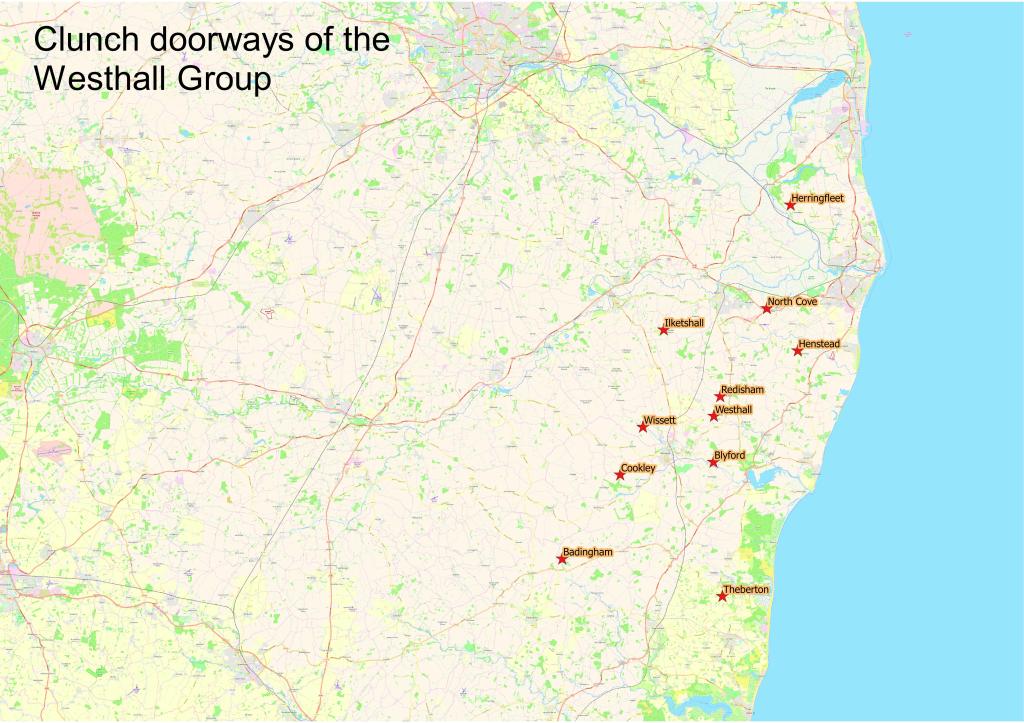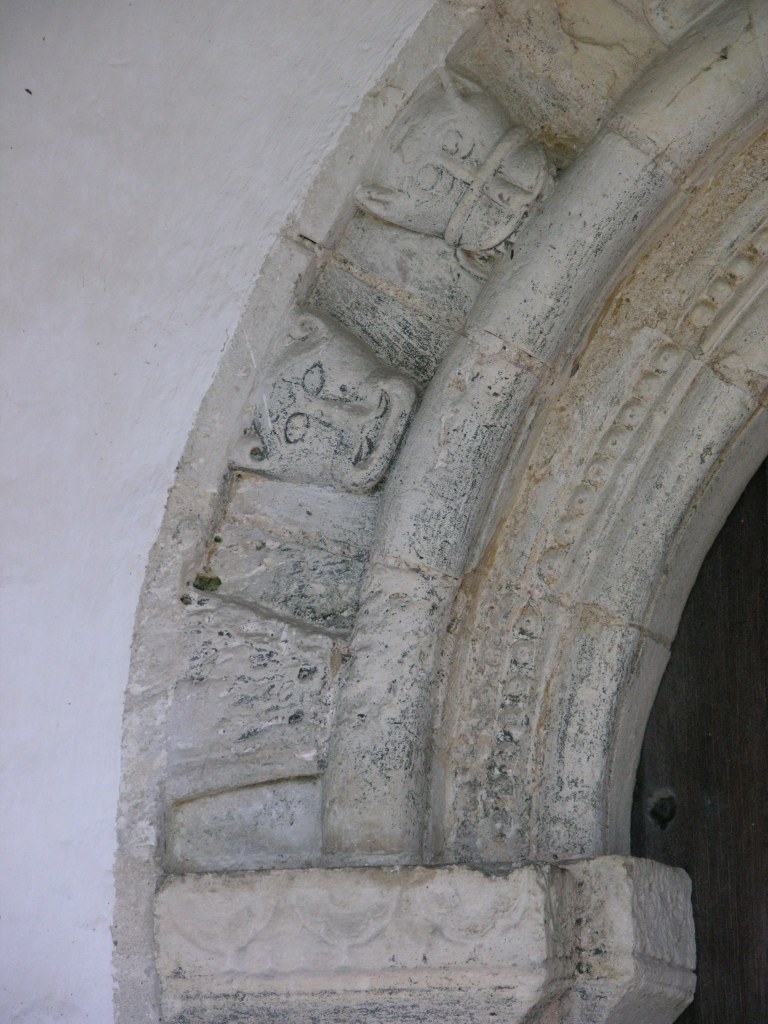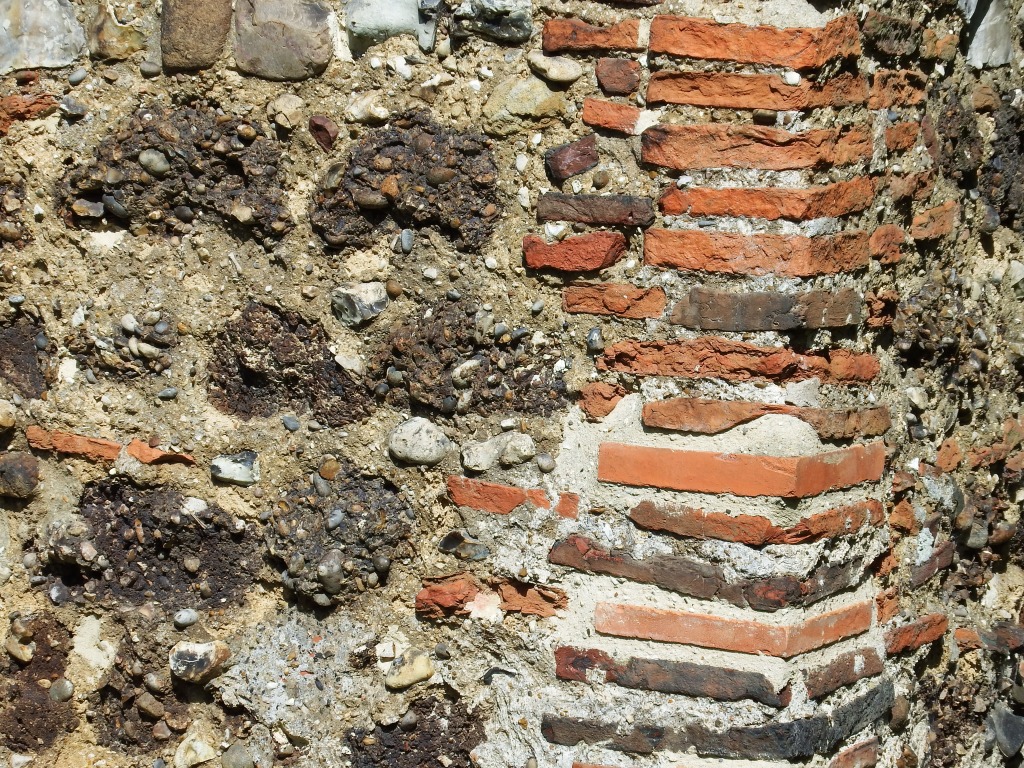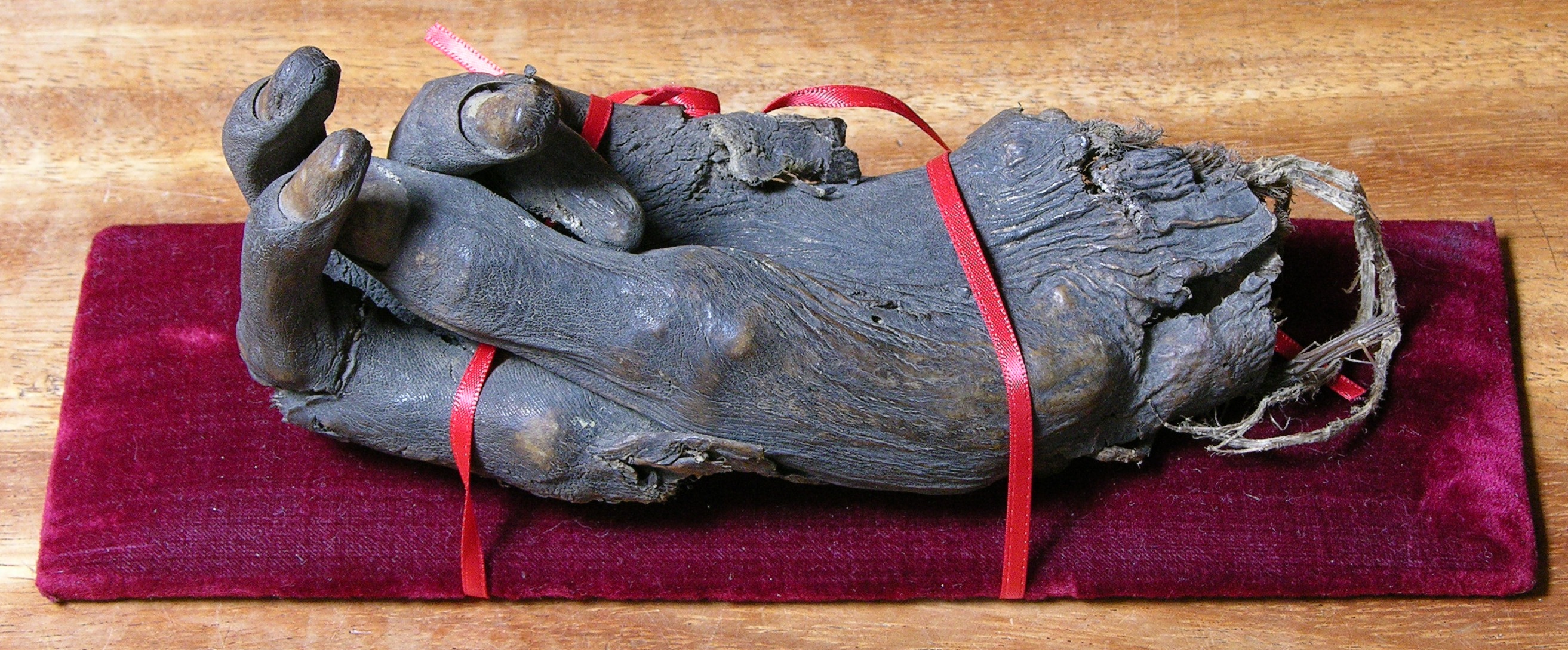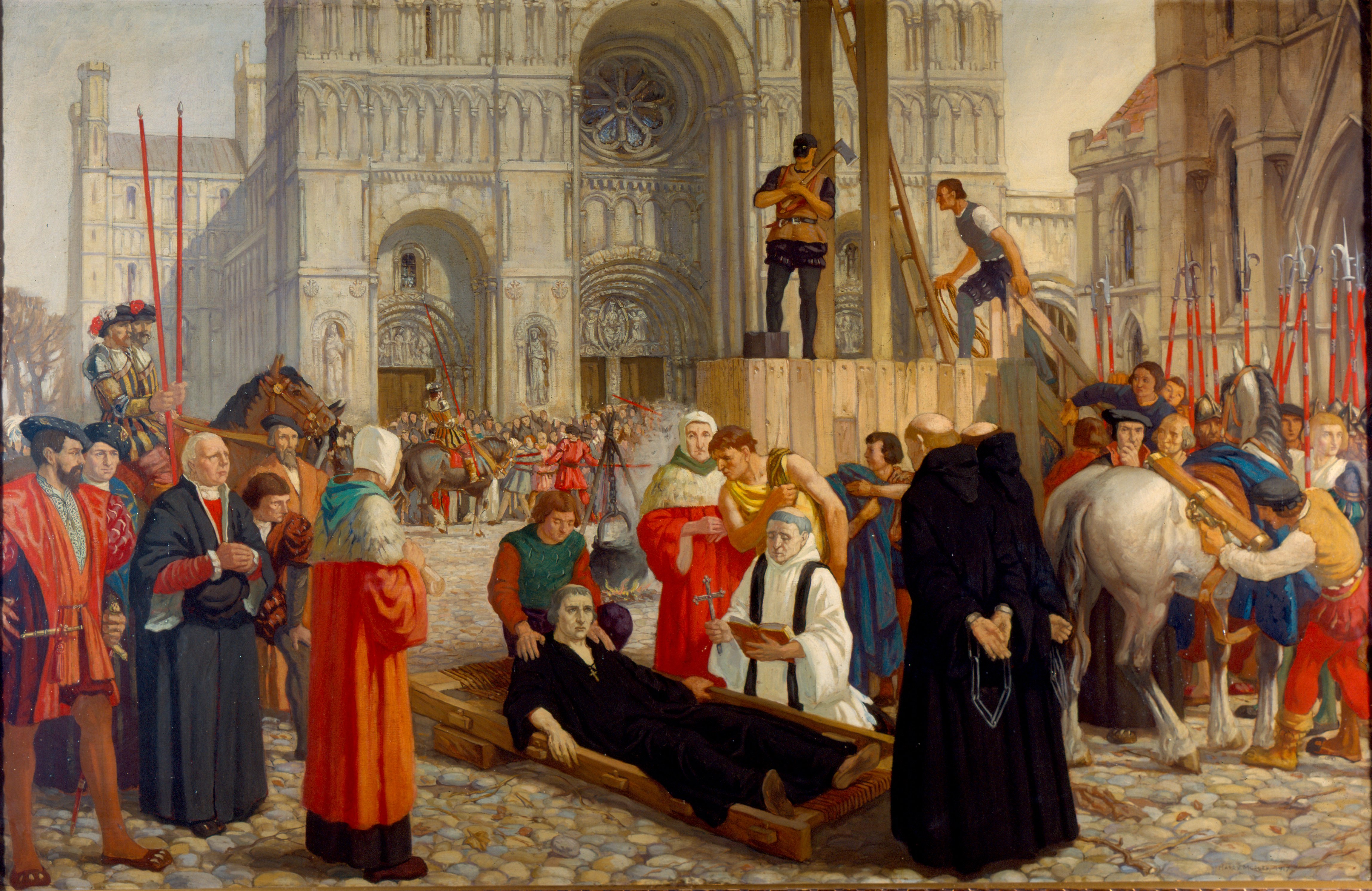I am an art historian whose main speciality is British Romanesque sculpture. My period, to be clear, is normally taken to extend from the mid-eleventh century to the end of the twelfth. In England, another term with a similar meaning is Norman. The start-date for this is defined by the Battle of Hastings, when the Normans took the country by conquest, succeeding the House of Wessex which had ruled since Egbert came to the throne in 802 (with a brief interruption in the early eleventh-century reigns of the Danish kings, Cnut, Harold Harefoot and Harthacnut), and the end-date by a series of changes in architecture and the visual arts in which Romanesque gives way to Gothic.
Traditionally the period between the departure of the Romans from Britain in the early 5th century and the Norman Conquest has been called Anglo-Saxon because early sources stated that Germanic invaders, Angles, Saxons and Jutes, conquered most of eastern and southern England in the fifth century and either drove out the native Romano-British population or killed them. More recent research has suggested that this was not what really happened, and evidence from burials, DNA and archaeology points to a continuity of occupation throughout the period in question. There is no doubt that there was a series of bloody battles, but also that the invaders had no interest in any kind of mass immigration programme.

Peoples of Britain c. 600 AD. Image Hel-hama
This is one reason why many modern scholars question the label Anglo-Saxon for the period. Another is that the term itself is a translation (from Latin), and that what the people called themselves was either Angli (which is what Bede (672/3-735) used) or Saxones (a term used by Gildas (c.500-70)). Anglo-Saxon as a descriptive term for the people did not appear before the 8th century, for example in the historical works of the Lombard Paul the Deacon, as a means of distinguishing the Germanic inhabitants of Britain from Saxons in mainland Europe.
A study of royal charters from the ninth century to the eleventh demonstrates that the terms Angli, Saxones and Anglosaxones had precise meanings in this period, and were used in royal titles depending on the extent of their area of rule, so, for example, Alfred was King of the West Saxons (rex occidentalium Saxonum) until he entered the ruined city of London and began to rebuild it in 886. His kingdom then included all of England except the areas held by the Danes in the east and north east, and he began to style himself Rex Anglosaxonum, or Rex Anglorum et Saxonum (king of the Angles and the Saxons).
From this it seems obvious that the position in the fifth to eighth centuries was rather different from that in the ninth to eleventh (as pointed out by Susan Oosthuizen). To be brief, the immigrants who arrived in the fifth and sixth centuries came from a very wide geographic region and spoke many different languages. To call this population Anglo-Saxons might give the impression that they were a more coherent group than they were. After the eighth century, as we have seen, we are on firmer ground. At this point in what is becoming a rather complex argument, I should say that I do not believe that what the people of England called themselves should necessarily determine what we call the period, and that we are at liberty to use a period name because we find it useful. I raise these issues simply to provide background to the controversy and to explain my own position. Anyone who is tied to the idea of using the term in the way it was used by the people themselves, and for the whole of England, would probably be obliged to limit it to the period after the unification of England under Aethelstan (927-39), but the difficulty with this is that Aethelstan called himself Rex Anglorum after he unified the country.

Hereward the Wake by Eric Fraser, from the cover of a 1961 edition of Charles Kingsley’s 1866 novel
There is a third reason that ‘Anglo-Saxon’ as a descriptive term for these people and their period of ascendancy in England has been questioned, and that is on account of a perceived appropriation by white supremacist groups, largely in the United States of America.
It is important here to distinguish between the terms ‘Anglo-Saxon’ and ‘Anglo-Saxonist’. The latter may refer either to an academic studying the Anglo-Saxon period, or to a belief about the superiority of the Anglo-Saxon race, which I shall examine below. In the light of this, it was probably a mistake to give the title, International Society of Anglo-Saxonists (ISAS) to the U.S.-based society founded in 1983 for ‘scholars interested in the language, literature, history and material culture of England and the English between the fifth and eleventh centuries CE’ . In a statement issued in September 2019 the Advisory Board of ISAS admitted that the term ‘Anglo-Saxonist’
has sometimes been used outside the field to describe those holding repugnant and racist views, and has contributed to a lack of diversity among those working on early medieval England and its intellectual and literary culture.
It was this that led to the campaign by a group of scholars, mostly based in the U.S.A, to rebrand Anglo-Saxon studies as Early English Studies. One of the main advocates of this change was Dr Mary Rambaran-Olm, a post-doctoral fellow in the English Department of the University of Toronto since 2019. Before that she had been a member of the Advisory Board of ISAS, but she resigned from the Board in early September 2019 during that society’s discussions over whether they should change their name. Later that month, following a vote of all the members, the ISAS did announce a change of name, to International Society for the Study of Early Medieval England (ISSEME), although one suspects that the name change was not seen as a priority because their website has still not been fully revised, and the former name still appears in the text.


Old and new logos of the ISAAS/ISSEME. Both still appear on their website.
Objections to the term Anglo-Saxon are summarised in Dr Rambaran-Olm’s three-part paper, ‘History Bites: Resources on the Problematic Term “Anglo-Saxon”’. In brief she has argued that the term ‘Anglo-Saxon’ has been misused to mean ‘white’ since the sixteenth century, and she objects to its use in a historical context, on the grounds of laziness and oversimplification. For Dr Rambaran-Olm the main problems with the term are that its imperialist connotations have tainted it, so that it cannot be divorced from the nineteenth-century racial belief system that advanced the argument that the civilization of English-speaking nations was superior to that of any other nations. The other meaning of Anglo-Saxonism, in fact. It is important to note that she has no objection to its use in citing previous scholarship or old texts where it appears, although she does suggest that old schoolbooks could be updated in new editions or replaced in rewritten curricula.
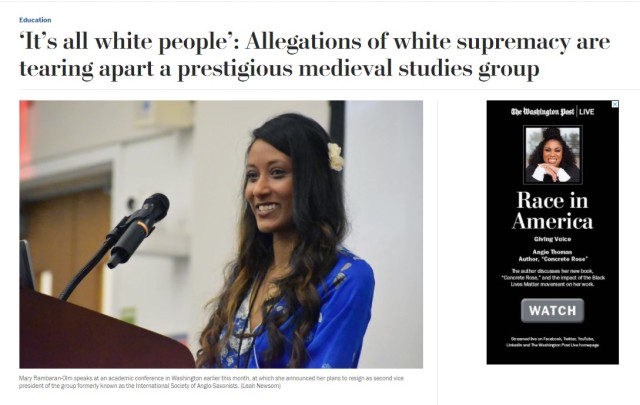
Mary Rambaran-Olm announcing her resignation (Washington Post, 19 September 2019)
It has been argued that the contamination of the term Anglo-Saxon extends beyond the the U.S.A., but like many Europeans I see little or no evidence of it in my own field. It is certainly true that the Anglo-Saxon period has a mythical status as a kind of golden age of English learning, heroism and fairness, and this theme was taken up by the eighteenth-century Whig historians, especially Catharine Macaulay (1731-91), who wrote her History of England as the story of a struggle by the English to win back the rights that had been crushed under the ‘Norman Yoke’. She found support for her ideas among the Founding Fathers of the American Revolution, including George Washington, Samuel Adams and Richard Henry Lee, whom she met on a year-long visit to America in 1784-85. In English-speaking countries, the idea of the superiority of the Anglo-Saxon race, or more broadly the Teutonic races, persisted throughout the nineteenth century in the writings of Carlyle, Thomas Arnold, Robert Knox and a few others, but while the racial issue was topical in the mid-nineteenth century, opinions varied as to the nature of the master-race, so that Disraeli, for example, gave the title to the Caucasians, because he did not wish to exclude the Jews. Knox could not accept as valid a grouping that included Jews and gypsies alongside Scandinavians, so denied that Caucasians constituted a race at all. Charles Kingsley, Regius Professor of History at Cambridge in 1860-69, was also a novelist, and his role in disseminating Anglo-Saxonist ideas to a broad middle-class public through popular novels like Westward Ho! (1855) and Hereward the Wake, Last of the English (1866) is well known. Today we find these novels almost unreadable on account of their embedded racist ideas, and even at the time Kingsley’s stance was not generally popular. Kingsley’s opposite number at Oxford, William Stubbs, stated in his inaugural lecture in 1866 that ‘early medieval England was remote enough to be politically uncontroversial and close enough to teach students of modernity instructive lessons’.

Cinema poster for Birth of a Nation (1915)
Popular culture was also involved in the mythology of white supremacy in the United States of America. D.W. Griffiths’ 1915 film, The Birth of a Nation, is a three-hour long epic dealing with the Civil War and the subsequent rebirth of the country in terms that demonise black Americans and present the Ku Klux Klan as heroic (the film was based on Thomas Dixon’s novel, The Clansman). The film was the first to be screened in the White House, at a special viewing attended by President Woodrow Wilson and his family before its general release. It became a box-office success; the highest grossing film until 1939, when it was overtaken by another Civil War epic, Gone with the Wind.
The Ku Klux Klan, founded at the end of the Civil War and suppressed in 1872, was revived in the wake of the film’s success, and grew into a nationwide movement by the 1920s. It was revived again in the 1950s, and survives in small numbers to this day. Meanwhile many supremacist groups have appeared, Wikipedia has entries on 64 of them. They often define themselves in opposition to black civil rights organisations, and their spectrum of beliefs and prejudices includes neo-Nazism, Caucasian supremacy, Christian elitism, anti-Semitism and a revival of the Confederacy. The term Anglo-Saxon is not particularly prominent in their rhetoric. Adherents of Christian Identity, for example, believe that the chosen people of the Bible were not the Jews but white Europeans, i.e. Germanic, Anglo-Saxon, Celtic, Nordic and Aryan people, and that non-whites are destined for damnation. As far as I know the commonest ethnic employment of the term is in the phrase White Anglo-Saxon Protestant (WASP), which was coined as a semi-whimsical epithet to denote the ruling classes in the 1950s. Before that term came into use, ‘Anglo-Saxon’ was used, often derisively, by Irish and French speakers critical of the special relationship between Britain and the United States. From the 1950s and ’60s onwards, WASP became a term used to define any American of European origin, including Germans, Dutch, Scandinavians and even Scottish and Irish Americans. It is fair to say that these usages are unhistorical corruptions.
The point I wish to make here is that American white supremacism has a background in a founding myth of the nation that persists today. In the United Kingdom matters are very different. There are certainly racial prejudices. As Rambaran-Olm points out, ‘all one has to do is google “racism and UK academy” to find articles that show subtle and overt racism embedded in the British academy’, but the contamination of the term Anglo-Saxon is not involved in them. In part this must be due to the very Imperialism that is at the root of much of the criticism of Britain and the British embodied in the revisionist arguments. Since the Acts of Union in 1707 the Kingdoms of England (including Wales) and Scotland have been a single nation, and a key feature of British expansionism was that the English, Scots, Welsh and Irish were all on board. One could not imagine the Highland regiments rallying to a cause that identified itself as Anglo-Saxon, but their contribution was notable, perhaps on account of Queen Victoria’s professed love of their country and their people.
It follows, to my mind, that it would be irrational to abandon the term on the grounds that it is being misused by those who have no idea of what it means. Unfortunately the position in the United States is that the term’s misuse to mean ‘white’, has certainly deterred many people from entering the discipline. The problem with replacing the term, as has been suggested, is that there is no other label that bears the same meaning for medieval specialists who, arguably, are the people most concerned in its use. Various alternatives have been offered. Early English would be unacceptably confusing, because it is already a well-established term defining a period of Gothic architecture in the thirteenth century. Old English is a linguistic term to describe the language used in England during the Anglo-Saxon period. It usefully distinguishes between the people (who spoke many languages) and a language that only became dominant in the period between the ninth century and the Norman Conquest. Early Insular, also suggested as an alternative by Rambaran-Olm, has never, to my knowledge, been seen as a synonym for Anglo-Saxon because it means something quite different in the artistic and palaeographic fields where it is used. It is an Irish monastic Celtic style that was to combine with Saxon arts in script, manuscript illustration and metalwork in the sixth century, and was largely subsumed by the time of the Viking raids of the late eighth century. It is defined stylistically in terms of interlace and biting beasts, and importantly for this argument, looks very different from much else that is called Anglo-Saxon.
Arguments about this issue have become polarised, and there is a good deal of rancour between the two camps involved. In opposition to the revisionists we have the group represented as signatories of The responsible use of the term ‘Anglo-Saxon’, This is a statement by Professor John Hines, Professor of Archaeology at Cardiff University that summarises arguments advocating the retention of the term. It was published online and by 3 January 2020, it had been signed by another 70 distinguished specialists in the field, mostly University academics. Half of the signatories were in British institutions (36), but there were 4 in the United States, 3 in Ireland, 2 in Canada, 7 in Scandinavia, 16 in other European countries, and single signatories in New Zealand, Japan and Sri Lanka. It is only to be expected that a British discipline should mainly be studied in this country, but perhaps more surprising that United States scholars are prepared to take a public stand against the revisionary arguments of the abolitionists.
 Most of the arguments I have seen come down strongly on one side or the other. Professor Michael Wood has published a popular article in which he even-handedly examines the arguments of both camps, and concludes with a call for the exercise of goodwill on both sides. There has been little of that so far, and as the debate develops the camps seem to be moving further apart. An article published last February by Jack Durand in the Independent Cambridge University newspaper, Varsity, argued that the university’s Department of Anglo-Saxon, Norse and Celtic (ASNAC) should either change its name or be closed down altogether. This brought an immediate YouTube response from an ASNAC student, who offered a closely argued defence of his department and his degree.
Most of the arguments I have seen come down strongly on one side or the other. Professor Michael Wood has published a popular article in which he even-handedly examines the arguments of both camps, and concludes with a call for the exercise of goodwill on both sides. There has been little of that so far, and as the debate develops the camps seem to be moving further apart. An article published last February by Jack Durand in the Independent Cambridge University newspaper, Varsity, argued that the university’s Department of Anglo-Saxon, Norse and Celtic (ASNAC) should either change its name or be closed down altogether. This brought an immediate YouTube response from an ASNAC student, who offered a closely argued defence of his department and his degree.
As a specialist in Romanesque art and architecture, what I call the period immediately before my own is a matter of considerable importance. It took me long enough to decide whether to call my own period Romanesque or Norman. I have no wish to upset anyone, or to alienate my colleagues on the other side of the Atlantic, but, as I have explained above, all of the alternative terms on offer are unacceptable to me for various reasons, and I would regret the loss of a widely-used and valuable term on the grounds that it has been misappropriated. I have found it useful to examine the issue and find that while the arguments of the abolitionists I have read do not convince me at all, those offered by Susan Oosthuizen have encouraged me to exercise more care in my employment of the term. I am aware of its limitations and its possibilities, and I shall certainly ensure that I know what I mean every time I use it. I am already inclined to use time-based terms like centuries in my periodization, and will certainly continue to do this, not because Anglo-Saxon has been contaminated as a term but because I am a historian and want to be as precise as I can in my use of the technical language of my discipline.

